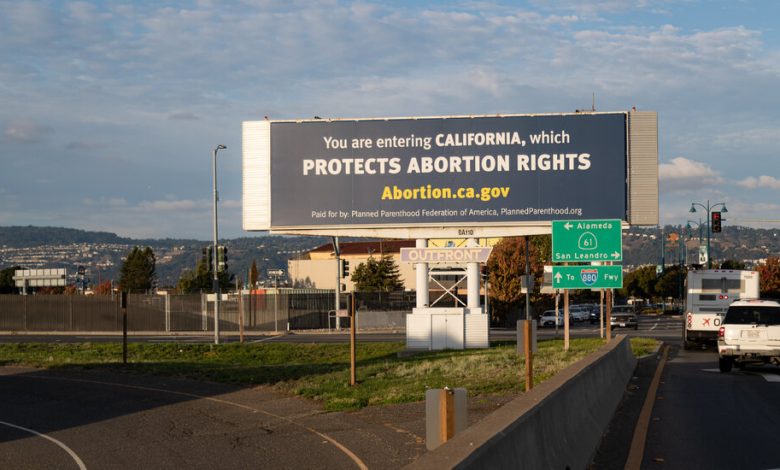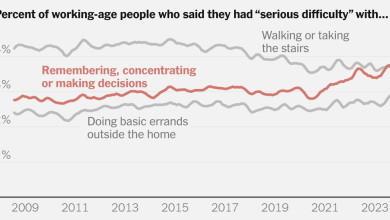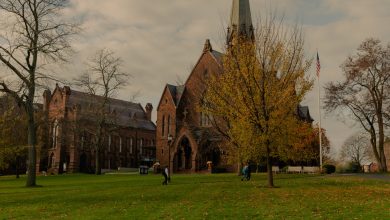Despite State Bans, Legal Abortions Didn’t Fall Nationwide in Year After Dobbs

In the year after the Supreme Court ended the constitutional right to abortion, something unexpected happened: The total number of legal abortions in the United States did not fall. Instead, it appeared to increase slightly, by about 0.2 percent, according to the first full-year count of abortions provided nationwide.
This finding came despite the fact that 14 states banned all abortions, and seven imposed new limits on them. Even as those restrictions reduced the legal abortion rate to near zero in some states, there were large increases in places where abortions remained legal. Researchers said they were driven by the expansion of telemedicine for mail-order abortion pills, increased options and assistance for women who traveled, and a surge of publicity about ways to get abortions.
The response by abortion providers and activists to the end of Roe v. Wade, it seems, has resulted in more access to abortion in states where it’s still legal — not just for women traveling from states with bans but also for women living there.
Still, new bans and restrictions have had far-reaching effects. Many women, especially in the South, have turned to methods outside the U.S. medical system or carried their pregnancies to term, researchers said. These women are likely to be poor, teenagers or immigrants, and to have young children or jobs that don’t give them time off.
“I always think that should be the focal point to the story: The loss of access is profound and enormous,” said Dr. Alison Norris, a professor at Ohio State and a chair of WeCount, which gathered the data. “But it’s also a story of what happens when health systems increase access. Underlying unmet need for abortion may be being met now because of changes post-Dobbs.”
John Seago, the president of Texas Right to Life, said he was not surprised to see so many women continuing to seek abortions. He said that to decrease the number, policymakers needed to increase enforcement of bans and provide more support for pregnant women.
“For us, it’s such a straightforward ethical issue to cause the death of another human being that it’s not a question of whether we need to prohibit it or not,” he said. “Now we are into what is effective.”
In the 12 months after the Dobbs decision in June 2022, there were on average 82,298 abortions a month, compared with 82,115 in the two months before Dobbs, WeCount found. The group, part of the Society of Family Planning, which supports abortion rights, collects monthly numbers from providers across the country. The new data, released Tuesday, included 83 percent of known providers, and researchers estimated the remainder based on historical trends and abortion data from states.
Another estimate of abortions by the Guttmacher Institute, using a smaller sample of providers and for a shorter period, also found that abortion was most likely increasing nationwide.
The report does not include abortions outside the U.S. medical system — such as ordering abortion pills from abroad or traveling across the border. On average, there were around 5,000 more requests a month for pills from the largest overseas provider, Aid Access, in the 11 months after Dobbs than in the period before that decision was leaked, according to new data from Abigail Aiken, who leads the Self-Managed Abortion Needs Assessment Project at the University of Texas at Austin.
The biggest increases in legal abortions occurred in states that border those with bans, suggesting that many patients traveled across state lines. In New Mexico, the average number of monthly abortions in the year after Dobbs increased 61 percent from the two months before, to 1,910. In Illinois, the rise was 33 percent, to 7,302. In Florida, which bars abortions after 15 weeks of pregnancy but is surrounded by states with stricter bans, abortions were up 28 percent, to 7,705.
Patients regularly travel hundreds of miles, and confusion about laws and continuing changes to them have made travel options progressively more difficult, said Alexia Rice-Henry, co-executive director of ARC-Southeast, which helps people in six states arrange and pay for travel to abortion clinics.
In New Mexico, several new clinics opened after Dobbs. One is operated by Whole Woman’s Health, which was forced to close three locations in Texas in July 2022. Amy Hagstrom Miller, the organization’s founder and chief executive, said 98 percent of the new clinic’s patients are Texans. Yet the New Mexico clinics serve many fewer patients than the Texas clinics did, she said. “It’s devastating how few people are making it,” she said.
Abortion also rose in states that don’t border states with total bans. In California, the average number of monthly abortions was up 6 percent to 13,704. In New York, it was up 2 percent to 9,198.
“There was more unmet need than we realized in the legal states,” said Ushma Upadhyay, a professor at the University of California, San Francisco School of Medicine and a chair of WeCount.
Planned Parenthood Northern California, which operates 17 clinics, began hiring and expanding appointments and telehealth months before Dobbs. It was in part to prepare for an overturn of Roe, and in part a realization that demand for women’s health care had built up during the pandemic, said Dr. Sara Kennedy, its chief operating and medical officer. It also started a program to cover the cost of abortion for patients who needed it.
She called the resulting increase “very dramatic”: Medication abortions increased 25 percent in the year after Dobbs, and procedural abortions 18 percent.
In New York, patients have flown from Texas, Florida and Georgia, said Chelsea Williams-Diggs, interim executive director of the New York Abortion Access Fund. Even if New York City clinics, for example, aren’t close, there are many flights, and patients may know family or friends in the region.
“When we think about the people needing to travel and needing financial support, we’re thinking about Black and brown folks, immigrants, and a lot of those people have connections to New York,” she said. “We hear that all the time: ‘My cousin or auntie lives here.’”
She was surprised to also see an increase in New Yorkers asking for assistance. In rural parts of the state, she said, clinics can be far and often don’t perform abortions past the first trimester, but even in New York City, calls have increased. She attributes it to publicity — policymakers talking about abortion, celebrities sharing their abortion stories and billboards advertising ways to find one.
“We’re seeing resident New Yorkers who are saying, ‘I thought we didn’t have any options,’” she said. “People didn’t know abortion funds existed.”
Since Dobbs, 20 states and Washington, D.C., have passed laws improving access to abortion and protecting providers and patients. California eliminated out-of-pocket costs for abortion care, and Oregon invested $15 million to open new clinics and pay for people to travel from out of state. Some states allowed nurse practitioners and physician assistants to do abortions.
Another contributor to the apparent increase is something that preceded Dobbs: the legalization of telemedicine abortion. The Food and Drug Administration began allowing providers to mail pills without an in-person visit when health care offices closed early in the pandemic, and made the policy permanent in December 2021.
In response, start-ups opened to provide abortions this way to women in states where it is legal. Some prescribe pills based only on an intake form. They charge as little as $150, compared with $500 to $800 for a medication abortion at a clinic.
Existing clinics, including many Planned Parenthood affiliates, also began offering telemedicine abortions. Some primary care providers now prescribe abortion pills, and since January, retail pharmacies have been able to dispense them.
More recently, women in states with bans have also been able to order the pills because of shield laws that protect providers that prescribe and mail pills to such patients. After the period covered in the report, at least two, Aid Access and the Massachusetts Medication Abortion Access Project, began prescribing and mailing pills to patients in all 50 states.
Even as abortion access has expanded in some ways, so have limitations. Several states have banned or restricted abortion in recent months, and others, like Florida, are poised to impose further limitations. At the federal level, a case making its way through courts could ban the mailing of one of the two abortion pills. And abortion funds say that after a surge of post-Dobbs donations, fund-raising has tapered off.
“Folks came together and did the best they could to make sure they could see as many patients as possible,” said Danika Severino Wynn, vice president for access and care at Planned Parenthood Federation of America. She described the current system as held together with Band-Aids: “I don’t feel confident that we’re in a space where we can say, ‘Oh, we subverted a crisis.’”
Allison McCann contributed reporting.





